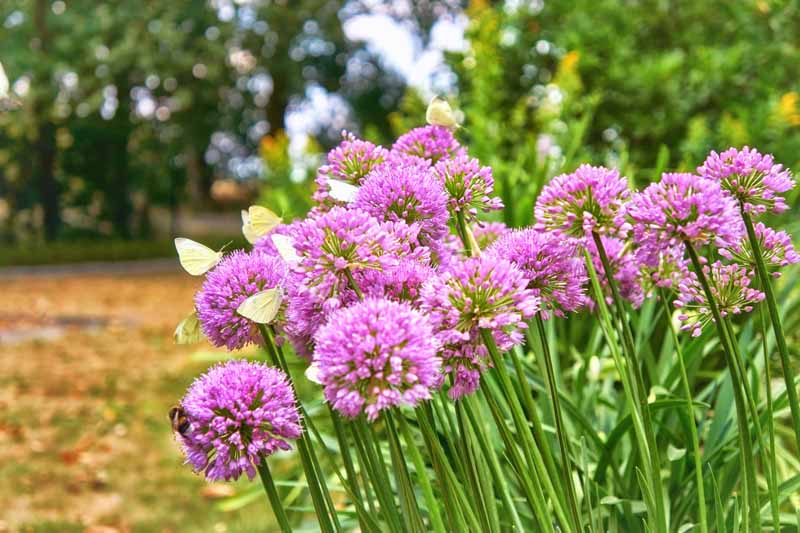Agapanthus Care Tips for Lush and Vibrant Flowers
Agapanthus Care Tips for Lush and Vibrant Flowers
Blog Article
Mastering the Art of Agapanthus Treatment: Necessary Actions for Healthy Development and Vivid Flowers
In the world of gardening, the cultivation of agapanthus stands as a rewarding venture for those that seek to nurture these sophisticated blooming plants. From choosing the ideal selection to understanding pruning techniques, the journey in the direction of cultivating flourishing agapanthus plants is multifaceted and holds the key to unlocking the complete potential of these agricultural treasures.

Picking the Right Agapanthus Range

When picking the appropriate Agapanthus selection for your yard, consider aspects such as environment viability, bloom shade, and growth practice. Agapanthus, frequently referred to as Lily of the Nile or African lily, comes in a variety of colors ranging from shades of purple and blue to white. Pick a flower color that complements your existing yard scheme to create an unified landscape. In addition, take into consideration the climate in your region to guarantee the Agapanthus selection you pick can flourish in your details conditions. Some selections are extra tolerant of cool temperature levels, while others favor warmer environments. Comprehending the growth routine of various Agapanthus selections is vital for proper positioning within your yard. Some ranges have a clumping growth habit, ideal for boundaries or containers, while others have an even more spreading nature, appropriate for ground cover or mass growings. By very carefully assessing these factors, you can choose the ideal Agapanthus variety to boost the charm of your yard.
Perfect Planting Conditions
Taking into consideration the optimal ecological needs is crucial for effective Agapanthus growing. Agapanthus prospers in well-draining soil with a somewhat acidic to neutral pH level. When planting, select a place that gets complete sunlight to partial color. In hotter environments, offering some mid-day color can protect against scorching of the fallen leaves. Agapanthus plants are delicate to cold temperature levels and need to be protected from frost throughout winter season.
To ensure healthy and balanced development and lively blossoms, plant Agapanthus bulbs at a depth of about 2-4 inches and room them 8-12 inches apart. Including natural matter, such as compost, to the dirt can boost water drainage and fertility, advertising durable origin development. Mulching around the base of the plants aids retain wetness and subdues weed development. Normal watering is crucial, especially throughout the growing season, to keep the soil continually damp yet not waterlogged.
Watering and Feeding Tips
Keeping correct wetness levels and offering essential nutrients are vital elements in the care program for Agapanthus plants. When it comes to watering Agapanthus, it is essential to strike a balance. These plants favor constantly wet soil but are at risk to root rot if overwatered.
Feeding Agapanthus is important for promoting healthy and balanced growth and prolific flowers. Use a balanced fertilizer, such as a 10-10-10 formula, in the very early springtime as brand-new development emerges. By following these watering and feeding pointers, you can guarantee your Agapanthus plants grow and produce click resources lively, long-lasting blossoms.
Trimming Methods for Agapanthus
Pruning Agapanthus plants at the suitable times and with appropriate techniques is important for maintaining their health and wellness and advertising optimum growth and blooming. The ideal time to prune Agapanthus remains in late winter or very early spring before brand-new development arises. Begin by getting rid of any yellowing or dead fallen leaves near the base of the plant. Cut them as short as feasible without damaging the emerging shoots.
Deadheading spent blossoms can also reroute the plant's energy into creating more blossoms instead than setting seeds. If you desire to collect seeds for breeding, leave some flowers to dry and fully grown on the plant.
Remember to use clean, sharp devices to make accurate cuts and reduce the threat of introducing illness. Agapanthus. Normal trimming will certainly help maintain your Agapanthus looking healthy and cool while ensuring an abundant screen of beautiful blooms
Managing Typical Parasites and Diseases
After making certain proper trimming techniques for Agapanthus, it is crucial to deal with typical bugs and conditions that can affect the wellness and vigor of these plants. One usual bug that influences Agapanthus is the Agapanthus gall midget.
Additionally, Agapanthus plants can suffer from origin rot if they are grown in improperly draining pipes soil. By being watchful and taking timely action against conditions and bugs, you can aid your Agapanthus plants prosper my link and create dynamic blossoms. Agapanthus.
:strip_icc()/snow-storm-agapanthus-18f19b9a-3e7c6c88441b4127a9015f9a9fecec59.jpg)
Final Thought
To conclude, grasping the art of agapanthus treatment entails choosing the best variety, supplying browse around here optimal growing conditions, proper watering and feeding, ideal pruning strategies, and addressing usual insects and diseases. By complying with these crucial steps, you can make certain healthy development and dynamic blooms for your agapanthus plants. Keep in mind to routinely check and maintain your plants to advertise their total health and long life.
To make sure healthy growth and vivid blooms, plant Agapanthus light bulbs at a depth of concerning 2-4 inches and area them 8-12 inches apart. By following these watering and feeding tips, you can guarantee your Agapanthus plants flourish and create lively, lasting blossoms.
One usual pest that influences Agapanthus is the Agapanthus gall midget. Additionally, Agapanthus plants can endure from origin rot if they are planted in inadequately draining pipes soil. By adhering to these essential steps, you can make sure healthy growth and dynamic flowers for your agapanthus plants.
Report this page